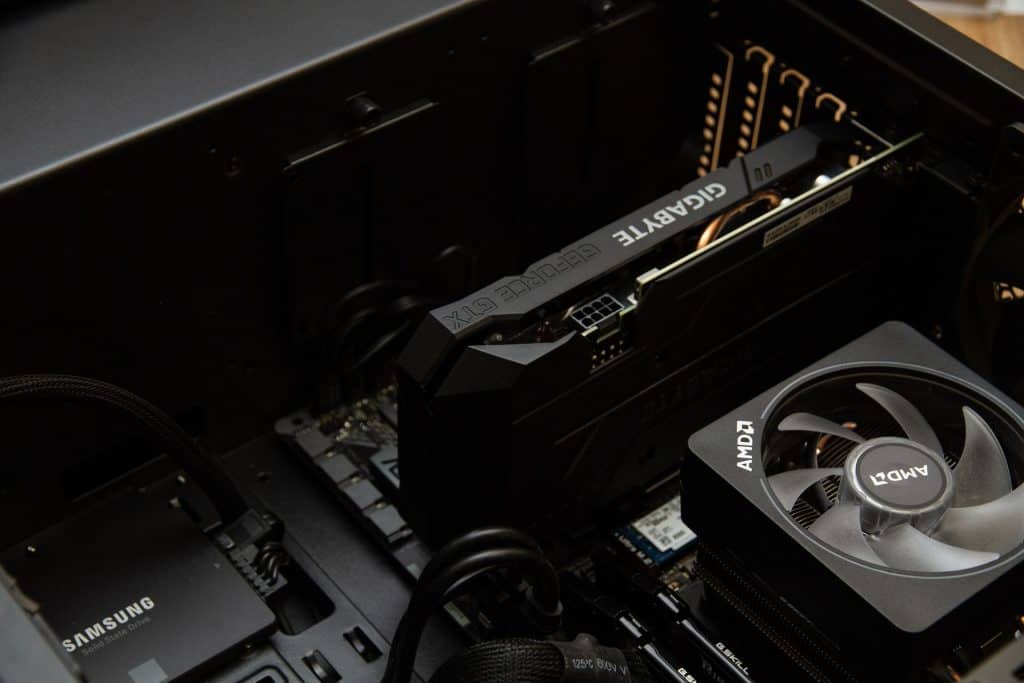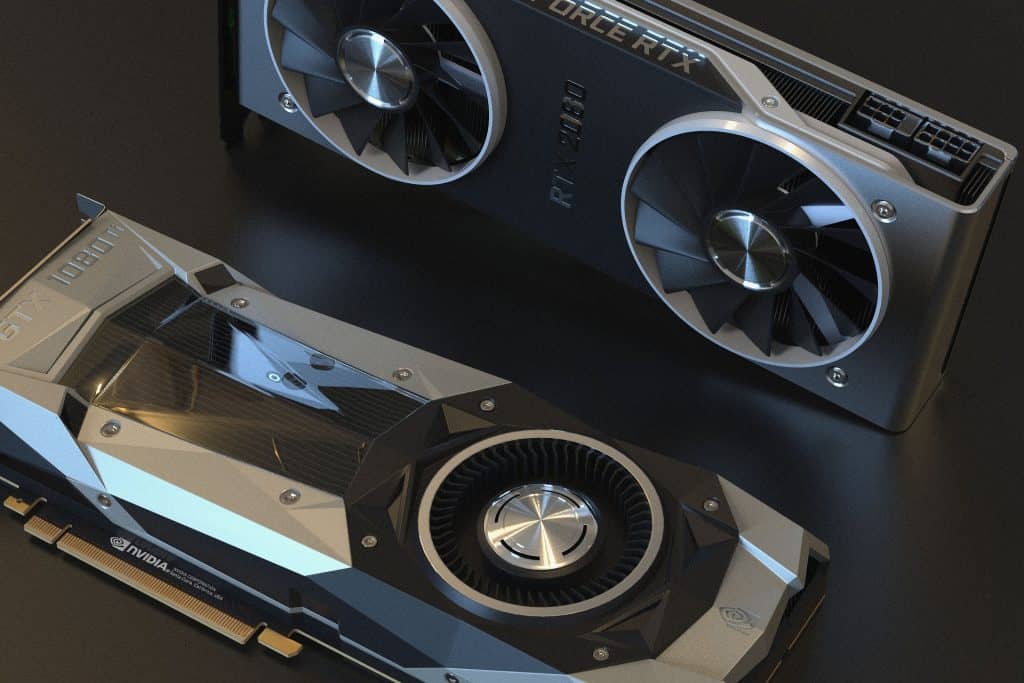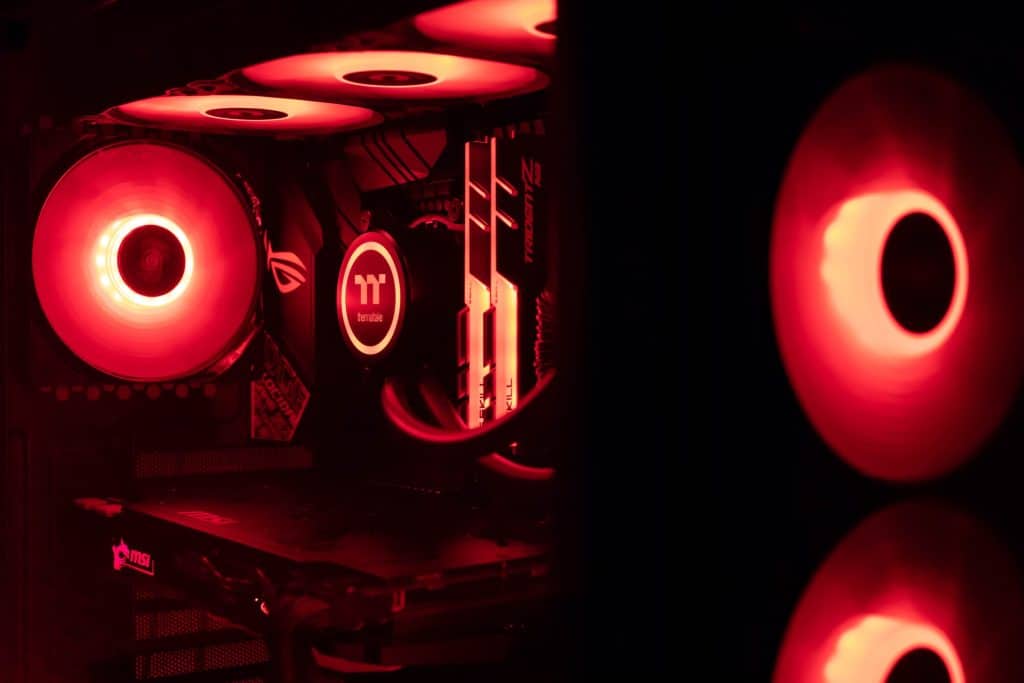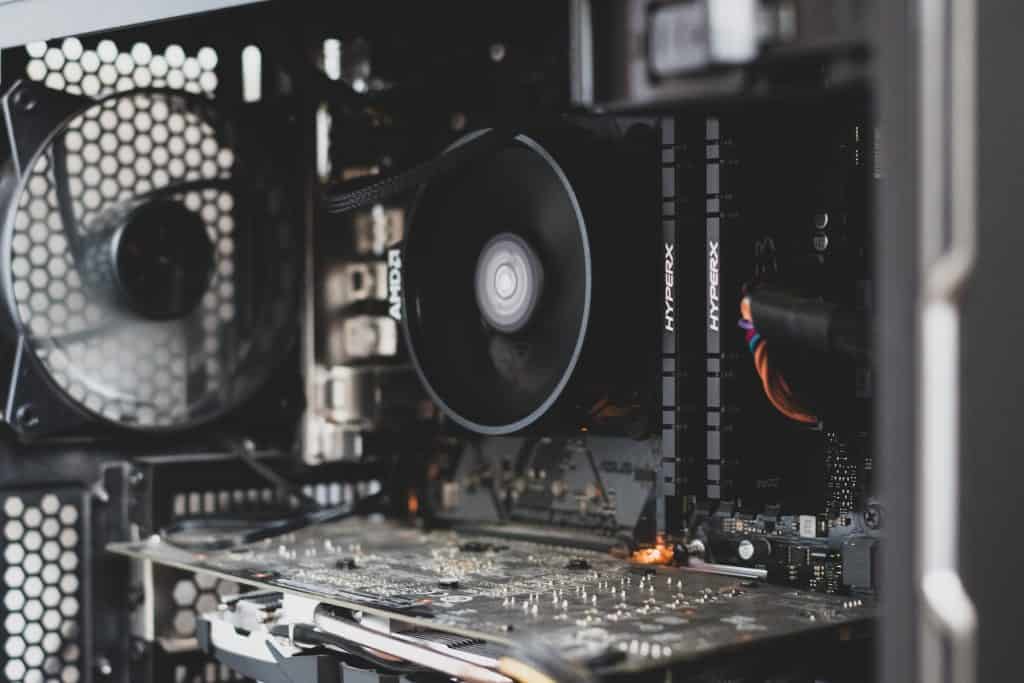Of course, there is nothing more frustrating and, in some cases, infuriating if your GPU is overheating when you are doing something important. Idle GPU temperature is not something you should be concerned about until it gets too high, but it is something you should be knowledgeable about.
GPU Idle Temps Explained
Noticing higher GPU idle temperature? You must keep that GPU running between 104° F to 140° F (40° to 60° C) when idle. But if your idle GPU consistently exceeds this limit, it’s running too hot and won’t function properly. Your GPU idle temp could indicate an issue with the overall performance of your system.
Keep reading to know what’s causing your GPU to go hot and learn how to reduce GPU overheating to make your system perform optimally no matter how graphics-intensive your tasks are.

What Does GPU Idling Mean?
For those who don’t know what GPU idling is, it’s the time when your GPU or system isn’t tackling any intense or heavy tasks. In other words, if your GPU is not working on any programs, it is considered idle.
And for this, even lighter programs — such as Notepad — must be closed when running system diagnostics to check the overheating issue. Even running such basic programs can give you inaccurate readings of idle GPU temps if your system overheats.
What is a Good Idle GPU Temperature & How to Check It?
A normal or good GPU idle temps are roughly around 60° to 80° F (15° to 25° C) above the room or ambient temperature. It means that at a room temperature of 70° F (21° C), normal GPU idle temps would be around 97° to 115° F (36° C to 46° C).
This is typically the situation if you have an open-air cooled GPU with a well-ventilated case. Based on your system, you may see higher temperatures going up to 140° F (60° C) if you have a laptop. But this can be well within limits.
But if you are regularly seeing temperatures of idle GPU over 140° F (or 60° C), there is something wrong; you need to deal with these issues as soon as possible to avoid any damage to the graphics card or other components.
How to Check Your GPU Temperature?
If you have an updated operating system, you can check your GPU temperatures right from your Task Manager on a Windows PC. For that, you will have to press CTRL+Shift+Esc.
From here, you will have to select the “Performance” tab. Your GPU temperatures will be on your screen, on the left-hand side.
Symptoms of an Overheating GPU
One of the most common symptoms of an overheating GPU is that it starts warming up when you run something on your PC that is graphics-intensive. And in most cases, it is while gaming or using a heavy software program for graphic designing, video editing, or audio mixing.
While a crystal-clear sign of overheating would be your GPU starting to smoke, there will be other signs. For example, your system will deliver just a few minutes of smooth operation, and then the quality of the graphics will start degrading.
You might see different screen artifacts and begin to hear your GPU’s fan running at higher speeds. Your system can deal with some graphics-related errors in some severe cases.

How to Measure Your GPU Temp
Measuring your GPU temperature is essential if you want to keep it under control. And the good news is that there are different ways to measure your GPU temperature. Here are some of the ways you can do it effortlessly,
Using Windows Task Manager
The latest installation of Windows OS, Windows 11, is capable of monitoring your GPU temperatures, and yes, it’s an inbuilt tool. Even Windows 10 had it in its 2020 update. You can access it from your Windows Task Manager — to open it, you need to press CTRL+Shift+Esc.
After that, you will have to click on “More Details,” located at the bottom left of your screen. From here, you can click on the Performance tab at the top and scroll down on the left of your screen, where it shows GPU. Click on it, and your screen will display the current temperature of your GPU at the bottom.
GeForce Experience by NVIDIA
The GeForce Experience app is a software program by NVIDIA that provides you with all the details on monitoring your GPU temperature. You can launch it from your Start menu and go to the in-game overlay settings. There will be a triangular icon in the top right corner.
Click it and then click on the Performance tab in the next window. Here you will be provided with all the stats of your GPU, including temperature, GPU clock, power draw, etc.
AMD Radeon
Another option is to go for the Radeon software program by AMD. Launch it from your Start menu and click on the Performance tab at your screen’s top left corner. As a result, you can see your GPU temperature right at the bottom.
Other programs for GPU temperature monitoring
There are some other programs that you can use as well. These include the likes of MSI Afterburner, EVGA Precision X1, and HWiNFO64. There are other third-party programs, but these are the most reliable.
But What’s Causing the GPU to Run Hot?
There can be multiple factors at play here. For instance, your fan speeds might be incorrect, or you are running too many graphics-intense processes. Moreover, if too many background applications are running simultaneously, your GPU will overclock and start running hotter.
Following are some common reasons why your GPU is running too warm.
Ambient Temperatures
Your ambient temperature matters a lot because it can directly impact the performance of all other components in your system. It can be the source of one of the issues discussed in the following section.
The medium used for cooling down the GPU — the air — has a vital role. Even with other regular appliances and electronics, they rely heavily on transferring heat out into their surroundings. So, if the room temperature is high or the climate is warmer where your PC is, it will directly impact the performance and temperature of your components.

Most standard performance testing procedures are conducted at 70° F (~21° C) room temperatures. Now, suppose that your room temperature is around 97° F (~36° C). Now, with that additional 27° F, the heat will be transferred to your components. This is why you notice that components get hotter sooner during summers and make more noise during the warmer part of the year.
Malware
If your system is infected with malware, it might be showing in your GPU usage numbers running too high. Any of this GPU-based malware can come hidden in different downloadable files now.
They can go unnoticed for many days and weeks and have much more sinister purposes than just manipulating your GPU numbers. Therefore, carefully assessing its performance is important to notice and monitor temperature changes.
You can use Windows Defender for this purpose, as it is highly effective in dealing with these malware programs in the long run. You can also use third-party programs to deal with this malware.
Dust Build-up
Dirt or dust build-up can trap heat and prevent the heatsink of your GPU from performing efficiently. As a result, it will stop cooling effectively. You can conveniently use compressed air to blow away the dust from the GPU and do the same with other components.
Fan Speed
It’s one of the most common reasons your GPU runs hot. These fans are designed to move the heat away from the component and keep it cool. Therefore, the case needs to be properly ventilated to avoid overheating problems.

If your fan speeds are capped, your GPU will start overheating, as the fan won’t run at appropriate speeds to circulate hot air quickly and keep the GPU cool. And as a result, the hot air stays longer inside your system, making your GPU run hotter.
Related Read: GPU Fans Not Spinning: Common causes and how to fix!
Background Processes and Applications
The GPU might run hot if you run multiple background tasks simultaneously. Maybe you are running a high-definition video on your browser, watching a live stream, or enjoying a movie. Perhaps you are doing all of these things simultaneously (yes, people do that too). You will notice that your GPU will start running warmer and will be hot in no time.
You can begin by closing multiple tabs on your browser one by one or shut down each of those unnecessary applications running in the background. And you must remember that muting them will not suffice.
Once you have done all of this and find your GPU is still running hot, you can open the Task Manager and quit any applications running in the background.
You will have to press CTRL+ALT+Delete to access the Task Manager. Go to the “Processes’ ‘ tab and close the running processes manually. But remember not to close “Explorer” or “System,” or you will end up halting the system because these processes run your operating system, and your computer needs them to function.
Overclocking the GPU
GPUs come with a clocking speed deemed usable and safe for modern processes. Nevertheless, some users might overclock the GPU so it can run faster and can support more graphics-intensive tasks.
So, running your GPU at a higher clocking speed could cause a bump in idle GPU temps. Test your overclock settings and cap the clocking speed if necessary to prevent your GPU from overheating.
Inadequate or Damaged Heatsink
Another reason your GPU is running hot could be that your heatsink is damaged or inadequate. With time, you will run more programs and applications, which become more intensive and put more load on your GPU.
Over time, your GPU heatsink might have been damaged due to wear and tear. Maybe its thermal paste is drying out. This paste helps quickly transfer heat from the components to the heatsink and lets the fans do their work more efficiently to keep the temperature down.
But the components won’t function to their total capacity if the thermal paste dries out. You can replace the thermal paste on your own, but before that, check if the GPU is still under warranty to keep yourself covered in case anything goes south.
Inadequate Power Supply
Indirectly, your power supply can also put any undue strain on your GPU. For instance, if your power supply doesn’t provide sufficient power to your graphics card, it will start underperforming and overheating.
Of course, the GPU will start running at much slower speeds and will have to do a lot of labor to execute your tasks. It might even have trouble dealing with some modern games or even the operating system.
Inadequate power results from inexperienced PC builders misjudging the energy required to run all the associated parts. This problem can significantly affect your components in the long run because they are not receiving enough power.
How to Lower GPU Temperatures
Regulating your GPU temperatures should be one of your priorities if you notice that your GPU is overheating.
If it continues, it will damage itself and harm other components as they will get exposed to overheating too. Here are some of the ways you can reduce your GPU temperature.
Closing Background Processes
You first have to close any unnecessary background processes and do so one by one. In most cases, your browser is the biggest culprit, so you can start closing open tabs one by one. You can also close any programs you are not actively using.
Increasing the Fan Curve of Your GPU
It is important to increase the speed of your GPU fans as it will ensure that this component doesn’t get hot. Most GPUs come with pre-packaged programs that enable you to control the fan curve of your GPU manually.
Cleaning Your GPU
Make sure to use compressed air to clean your GPU and other components. Compressed air is a safe method of cleaning your PC, and by doing this, you will enable your PC components to work efficiently.
Capping GPU Clock Speed
Dealing with more intense graphics overload, you will need to cap the clock speed of your GPU. It will prevent it from running too fast and overheating, even at idle temps. You can use the proprietary software of your GPU or any 3rd-party software to control the clock speed of this component.
Adding Additional Case Fans
You can add extra case fans to make ventilation even better. This solution might work well if your GPU is only slightly hot. And it will be effective in keeping your GPU cool and enable other components to function correctly.
Here’s a useful video on cooling down your GPU:
Conclusion
The GPU in your system has a significant role to play. It can directly impact the overall performance of your system. Therefore, you must be very careful when dealing with high idle GPU temps.
Depending upon your room temperatures, normal or good idle GPU temperatures can be around the 104° F mark (40° C). But if it’s going above that limit, you need to take care of this issue, or it will damage the GPU and harm other components in your system.